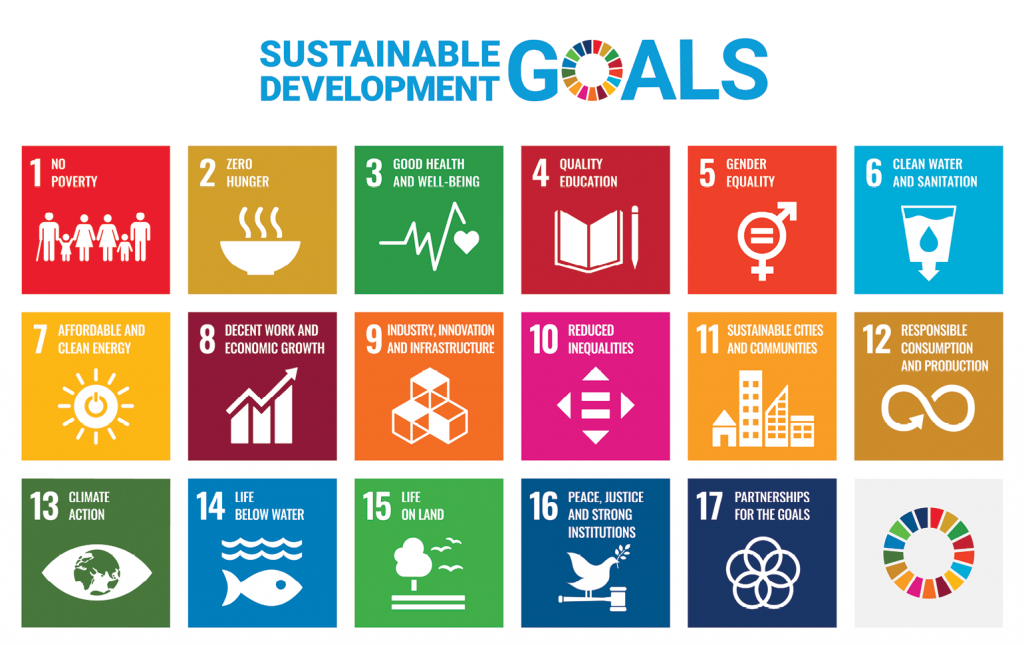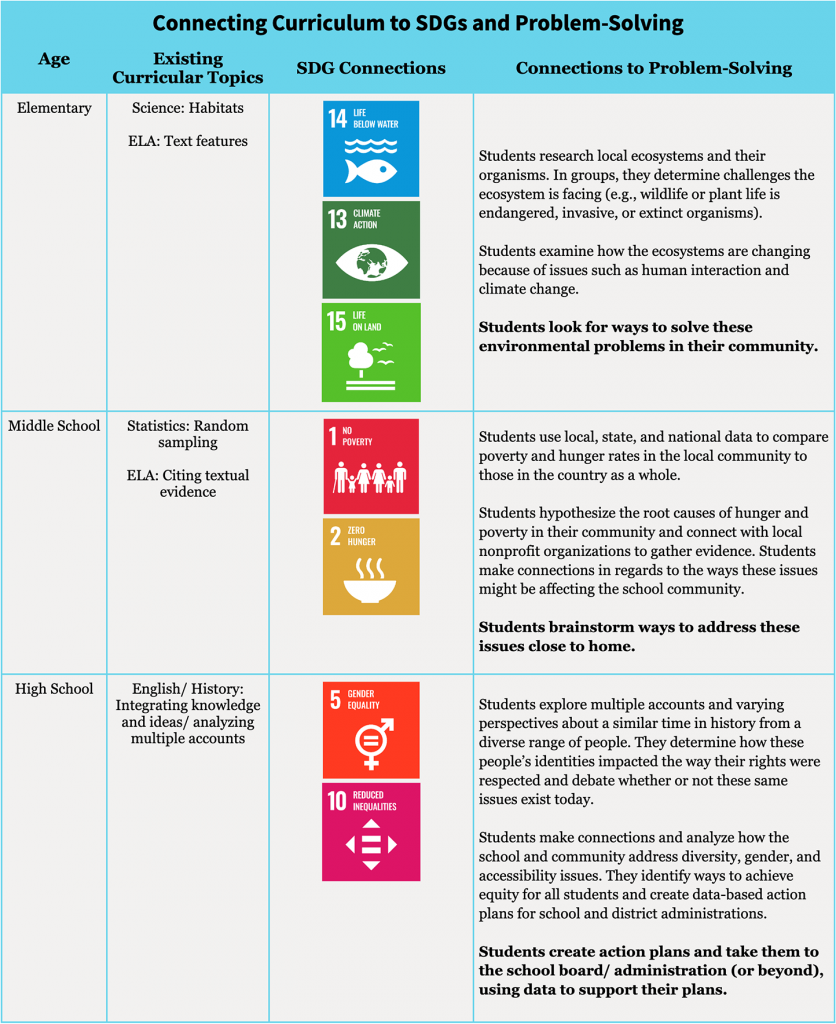“Why do we need to learn about this?” “Is this going to be on a test?” “How will I use this in real life?” Questions like these are all too familiar to teachers. Engaging students while teaching prescribed state standards can be difficult, but have you considered that there might be a framework that accomplishes both goals? Incorporating global issues in a way that sparks problem-solving is a key component of global education.
This approach doesn’t require an experimental pedagogy. It also doesn’t require a complete overhaul of what you are already doing in your school. Instead, it taps into students’ natural curiosity about real-world events and problems (locally and globally) to contextualize classroom learning. In the process, it helps students become global problem-solvers and leaders.
![]()
Curiosity is one of the global competencies that we at Participate Learning have identified as central to the development of students into global leaders who take action. The more curious students are about the world around them, the more driven they will be to tackle the world’s most pressing problems. Let’s take a closer look at specific ways to integrate global learning into the classroom.
1. See curiosity and global learning in action.
In Malaysia, a team of young entrepreneurs were driven by their curiosity about the frequency of flash floods and the role that recycling plays in preventing drainage clogs and climate change. This curiosity led them on a journey that connected them with leaders in their community—leaders who helped them start their own social enterprise where they created effective recycling processes that diverted 90 kilograms of ceramic waste.
This example may seem like too much for a school classroom, but Participate Learning partner schools are implementing similar action-driven projects every day. In Oxford, North Carolina, a class of elementary students became curious when they noticed the amount of uneaten food in their cafeteria. Where does this food go? This simple question led to an exploration of food waste both in their local school and around the world. As a result, students engaged in a class project to take action to reduce the food waste at West Oxford Elementary, one of Participate Learning’s Global Leaders schools.
Wondering about the attitudes, skills, and knowledge that the students at West Oxford Elementary are developing? Download the Profile of a Global Leader poster here.
2. Find a framework to guide your problem-solving.
When you first think about implementing global learning, it can feel like a massive undertaking. After all, the world is a pretty big place! You may feel like you have to make huge changes to everything you are doing in the classroom, but in fact, an enriching global journey doesn’t require you to rewrite your whole curriculum. Instead, an effective first step to implementing global education is exploring the United Nations’ Sustainable Development Goals or SDGs.

The United Nations launched these 17 goals in 2015 as a road map to making the world a better place to live for people and the planet by 2030. The SDGs identify the most pressing problems in the world, from climate action to food insecurity, and help you understand how they impact your community. By bringing these goals and the issues they address into your learning environments, you and your students are afforded opportunities to dig into the problems and search for actionable solutions. Using the framework of the SDGs in your classroom to explore real-world problems motivates students to collaborate with others and meaningfully engage in classroom discussions.
3. Use the SDGs and global action projects to make global learning visible.
In the case of West Oxford Elementary School, students focused on Sustainable Consumption and Production (SDG 12). This allowed them to centered their learning, and their global action project, around addressing food waste. From there, they connected the work they were doing with grade-level standards such as comparing the characteristics of living and non-living things.
But what if you and your school aren’t quite ready to jump in fully with a school-wide project or initiative? You can start small, while still making a significant impact. Make global learning visible for your students by displaying a poster of the SDGs in your classroom. Then, ask a simple question: How might we connect what is on this poster to something you are learning about right now? Just wait to see what happens. Kids are great at making connections; you just have to give them the opportunity.
Once your students’ curiosity is piqued, take it a step further and have the class find out more information about the goal(s) that interest them. Start by encouraging them to think of ways to extend the lesson. Be sure to give all students a chance to engage with the goals and to solve problems that interest them. Make it an invitation, rather than a mandate, to get curious about the world. Sometimes, hanging something new on the wall and letting students wonder about it is the easiest way for them to start exploring new concepts, ideas, and issues.
4. Integrate global problem-solving into your curriculum.
You’ve seen how the SDGs can engage students, but what about integrating global learning into your curriculum? And how do you spark your students’ curiosity in a way that initiates authentic problem-solving in your school?
Start by looking at your current school initiatives with fresh eyes. Consider ways to take existing curriculum a step further by connecting topics to the SDGs. Inviting more people to the table, like other educators, students, and community members, allows for diversity of thought. It also empowers students and teachers to connect their interests and bring their learning to life.
Then, look for the pain points. Are there certain units or skills that miss the mark each year? Are test scores low in a particular standard group? Think about how you might deepen understanding within these skills and standards by sparking student curiosity and leveraging problem-solving with local and global issues through the SDGs.
The possibilities are endless, but here are some engaging and effective examples to help you get started, all inspired by projects we’ve seen at Participate Learning’s Global Leaders schools:

These examples are probably very similar to the lessons you see in your school’s classrooms every day. That’s because global learning should function as a lens through which we filter pre-existing content and lesson plans. You shouldn’t have to reinvent the wheel; instead, find creative ways to add a global focus to pre-existing lessons!
To help, we’ve created this global lesson plan template that can easily be adapted to your classroom. The SDGs provide the global context and connections to the local issues that your students experience every day. With projects like these, multiple standards are addressed at once and the content is enriched through global learning. This combination gives students tangible opportunities to solve problems and make a difference in their community.
5. Spark curiosity and enhance student learning.
As teachers, we understand the importance of letting students follow their curiosity and satisfy their thirst for answers. Giving students real-world problems to solve allows the lesson to go far beyond a prescribed list of content and standards. It instills a love of learning for its own sake, not just for a grade. Problem-solving creatively is a skill that will make your students successful and competitive later in life, after they leave your school.
Are you ready to take the leap and create curiosity-driven, unique learning experiences for your students? We can help! Find out more about how we work with schools to develop personalized plans to infuse global learning into their curriculum here. Connect with Participate Learning on Twitter to see more examples of global learning in action.




